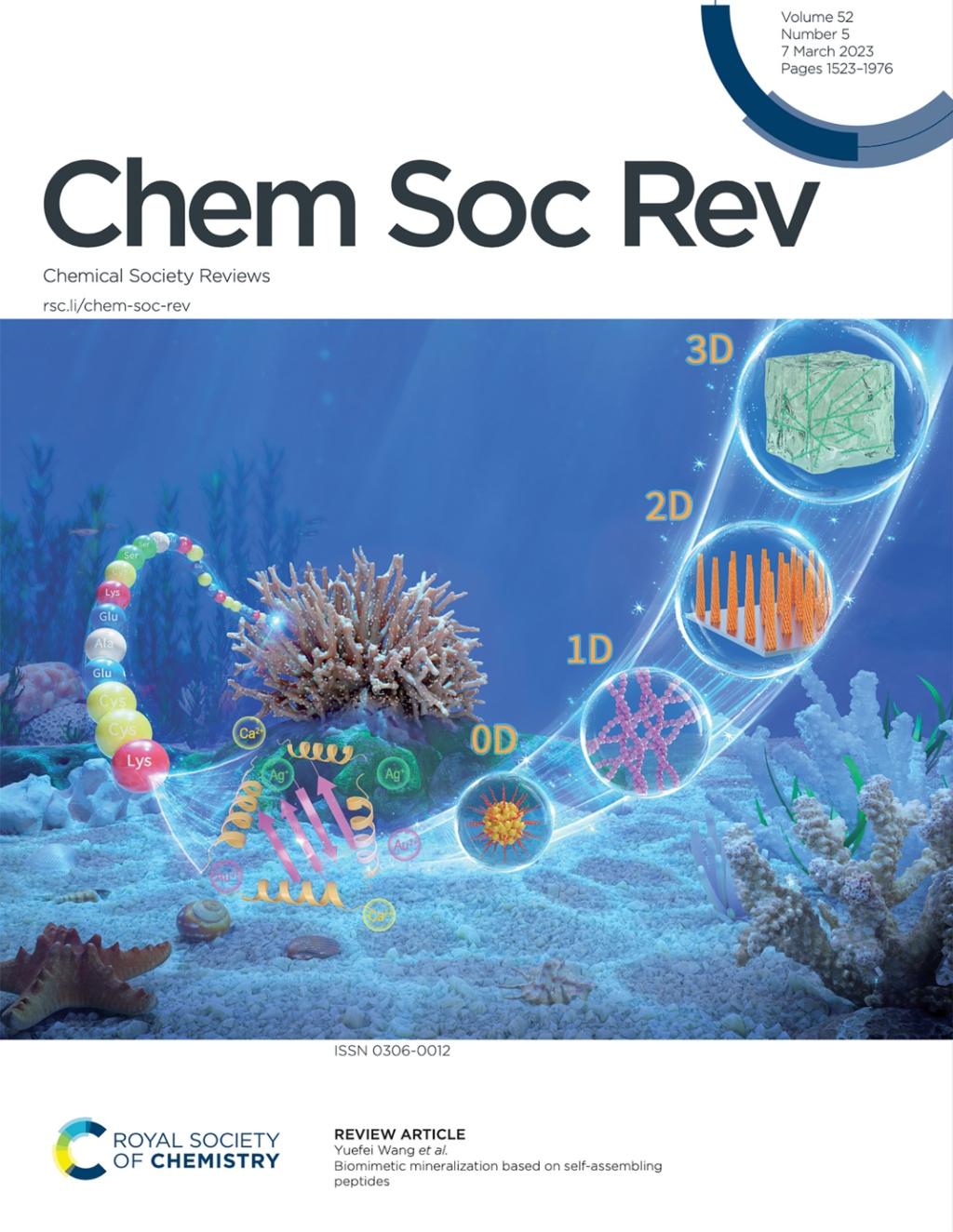“Peptide”, a term that often appears on medicines or cosmetics ingredients, is no stranger even to ordinary people. It is a class of polymers composed of amino acids connected by peptide bonds, which is the basic component of living organisms. Biomimetic mineralization is to simulate the mineralization process of organisms in nature, such as the formation of bones, teeth, shells, etc., and uses biomolecules to synthesize inorganic minerals under mild conditions.
How to synthesize peptide-based biomimetic mineralized materials? What unique properties and applications do they have? The front cover article in the current issue of Chemical Society Reviews, a renowned international comprehensive journal of chemistry gives a systematic understanding of it.

Figure 1 The paper was selected as the front cover of Chemical Society Reviews
(Published 6th March 2023)
Yuefei Wang, an associate professor at the School of Chemical Engineering and Technology of Tianjin University published the review titled "Biomimetic mineralization based on self-assembling peptides".
Peptides have the advantages of good biocompatibility and structural versatility and contain abundant active groups. Therefore, they can regulate the formation process of inorganic materials through biomimetic mineralization, and achieve precise control of the morphology, size, and composition of related mineralized materials, endowing them with catalytic selectivity, targeted binding capability, and stimuli responsiveness.
In recent years, researchers also use computers to rationally design the amino acid sequences of peptides, precisely control the interactions between peptides and inorganic substances, and obtain complex hierarchical structures that cannot be obtained in nature.
The peptide-based biomimetic materials have been widely used in biosensing, bioimaging, anti-tumor treatment, drug delivery, tooth and bone repair, and other fields, due to their unique optical, catalytic, and biological activities.
“For example, one of the peptide-based biomimetic materials, the peptide-metal nanoparticles have unique optical activity, multi-stimuli responsiveness, and specific recognition capabilities. They can be used to realize qualitative and quantitative detection of various active substances, like tumor markers and metal ions by the naked eye or spectrometer detection,” Yuefei Wang introduced.
He also pointed out the application of peptide-based biomimetic materials in the field of biomedicine including extensive use in bioimaging and a promising future for drug delivery and cancer therapy.
“The third application is in the field of biomimetic catalysis.” Wang noted that the research group from Tianjin University has successfully created a series of artificial metalloenzymes with excellent performance. “Compared with natural enzymes, these artificial metalloenzymes have higher catalytic activity and stability, lower cost, and relatively high selectivity. They are expected to replace natural enzymes in the fields of green chemistry and chemical engineering such as drug synthesis and energy catalysis.”
The first author of the review is Qing Li, a Ph.D. candidate at the School of Chemical Engineering and Technology, Tianjin University, and her supervisor is Professor Wei Qi.
Yuefei Wang specializes in basic research and industrial application in the field of peptide bionic science and engineering. In recent years, he has focused on the development and industrial application of peptide-based drug delivery carriers and related high-value-added products. He has achieved 4 patent technology transfers and published more than 80 papers.
By Eva Yin






